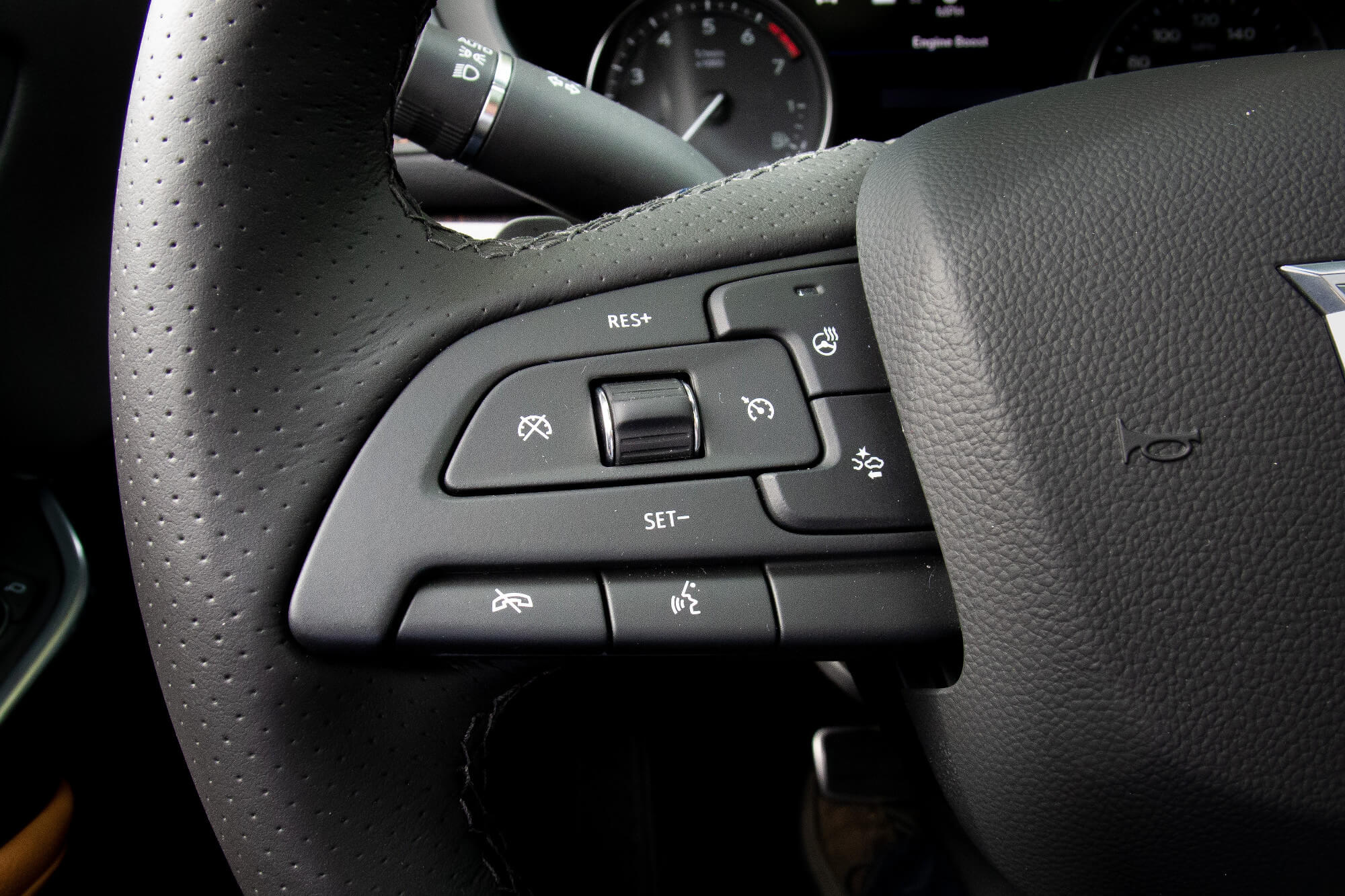Table Of Content

Of course, many years after Teetor passed away, the luxury innovation of adaptive cruise control happened. It’s notable that the cruise control function came with a basic system that would alert drivers to make sure they’re paying attention. Like today’s Tesla, Teetor was worried about drivers dozing off while driving on cruise control. Hopefully, this article has been helpful at revealing some of the mysteries of cruise control. All it takes to maintain a steady speed is some basic mechanics, a small computer, and a bit of math – and it all leads to a spectacular, steady, and smooth ride.
Life has many roads. Your weekly Navigator is just a click away.
Cruise control is a feature allowing the driver to set a predetermined speed, which the system’s computer maintains until the driver adjusts the speed, taps the brake, or disengages the system. In other words, once set, the cruise control system automatically controls vehicle speed, relieving the driver of that responsibility. Two companies are developing a more advanced cruise control that can automatically adjust a car's speed to maintain a safe following distance. This new technology, called adaptive cruise control, uses forward-looking radar, installed behind the grill of a vehicle, to detect the speed and distance of the vehicle ahead of it. Controlling the speed of a car is a classic application of control system theory.
tools and tips to help you survive winter on the road
What Is Ultra Cruise? Here's How GM's Hands-Free Driving System Works - Edmunds.com
What Is Ultra Cruise? Here's How GM's Hands-Free Driving System Works.
Posted: Wed, 08 Mar 2023 08:00:00 GMT [source]
If that car slows down, ACC slows your car down to keep a safe distance. The car also sports another set of eyes in the form of a standard camera that points through the windscreen. This also looks out for nearby hazards, such as pedestrians, cyclists and other motorists, whilst also reading road signs and detecting traffic lights. The bumper-mounted radar, which is already used in autonomous cruise control, looks out for vehicles in front of and behind the car.
Cooperative Adaptive Cruise Control (CACC)

If the vehicle skids, cruise control may continue to accelerate, increasing the risk of losing control. Cruise-control can also be problematic when approaching curves that require slowing down, as it may not adjust speed appropriately. The most important input is the speed signal; the cruise control system does a lot with this signal. First, let's start with one of the most basic control systems you could have -- a proportional control. This technology is controlled by a tiny computer located behind the dashboard.
Point is, the more time you spend at a steady speed, the less fuel your engine needs. Most cruise control systems allow us to make adjustments without deactivating the system. If we need to slow down, we can tap the brakes or use the “Cancel” button to temporarily disengage cruise control. Once we’re at the desired speed again, we can reactivate it with a simple button press.
On an engine, the governor uses centrifugal force to adjust the throttle position to adapt the engine's speed to different loads (e.g., when going up a hill). For safety reason most systems do not work below 30 mph (48 km/h). The brain of a cruise control system is a small computer that is normally found under the hood or behind the dashboard.
Benefits of cruise control
Some systems also have the ability to recognize and respond to pedestrians and other obstacles, providing an added layer of safety. In the right circumstances, it can potentially enhance your driving experience by reducing fatigue, increasing safety and improving fuel efficiency. When used correctly, cruise control can contribute to safer driving.
What to read next
This works in a similar way to the brake booster, which provides power to your brake system. ICC systems can also recognize lane markings and keep the car centred within the lane, providing additional safety and convenience benefits. Some ICC systems can even detect and respond to pedestrians and other obstacles, providing an added layer of safety. So next time you get out on a long, open highway, pop on your cruise control system and relax – knowing that you understand exactly what your car is doing to maintain speed. The derivative of these systems is acceleration, which is also closely monitored. Cruise control systems monitor current acceleration, reacting to changes in speed.
Types of Cruise Control Systems
If the cruise control can’t detect a speed signal, the cruise control will not set. In many cases, the speedometer will not function correctly due to the same fault. If you notice any kind of issue with your cruise control, contact a mechanic before you head out on your next long drive. Remember, these systems are here to make your drive smoother and safer, but they're not a replacement for your attention.
Most systems do not allow the use of the cruise control below a certain speed - typically around 25 or 30 mph (40 or 48 km/h). The steering-wheel controls for some systems have buttons or toggles with labels like “Accel” and “Decel,” while others simply use up-and-down arrows to signify a button’s function. We recommend consulting your car’s owner’s manual to decode the cruise control buttons and their operation for your specific vehicle. Here’s a list of the driver-operated functions provided by the cruise control buttons and toggles. Some controls perform multiple functions, depending on how they are used.
By maintaining a steady speed, it reduces the likelihood of erratic driving behavior and potential accidents. However, it is important to note that cruise control shouldn't be used in certain conditions, such as heavy traffic or slippery roads. Cruise control is a handy feature for drivers that allows you to maintain a constant speed without having to keep your foot on the gas pedal.
Your vehicle’s engine, transmission and other components are designed to work hand-in-hand with its cruise control system and are extensively tested and integrated with one another for trouble-free performance. Google launched its self-driving car a few years back, which completely relies on the technology of autonomous cruise control. When she’s not writing about electric vehicles or the best cars to buy, she enjoys watching movies. The big difference between the two is that with the help of radars and other sensors, your car will also slow down depending on what’s ahead of it. One minute you’re driving your car and everything seems fine, and the next moment you hear a strange noise coming from your car as you accelerate. With Super Cruise, the vehicle uses special GPS hardware and sensors to accurately compare its position to a 3D map of pre-qualified highways.
Adaptive Cruise Control (ACC) is an advanced form of speed control that uses sensors and radar to detect the distance between the driver’s car and the vehicle ahead, unlike other types of cruise control systems. This type of cruise control automatically adjusts the speed of the vehicle to maintain a safe following distance and can even bring the vehicle to a complete stop if necessary. To engage cruise-control, you usually activate the system by pressing buttons on your steering wheel. You can then set your desired speed, adjust it within the system, and deactivate it when needed. This feature allows you to maintain a constant speed even when you’re not pressing the accelerator.
The cruise control system controls the speed of your car the same way you do -- by adjusting the throttle position. But cruise control actuates the throttle valve by a cable connected to an actuator, instead of by pressing a pedal. The throttle valve controls the power and speed of the engine by limiting how much air the engine takes in (see How Fuel Injection Systems Work for more details). The cruise control system actually has a lot of functions other than controlling the speed of your car. For instance, the cruise control pictured below can accelerate or decelerate the car by 1 mph with the tap of a button. There are also several important safety features -- the cruise control will disengage as soon as you hit the brake pedal, and it won't engage at speeds less than 25 mph (40 kph).

No comments:
Post a Comment